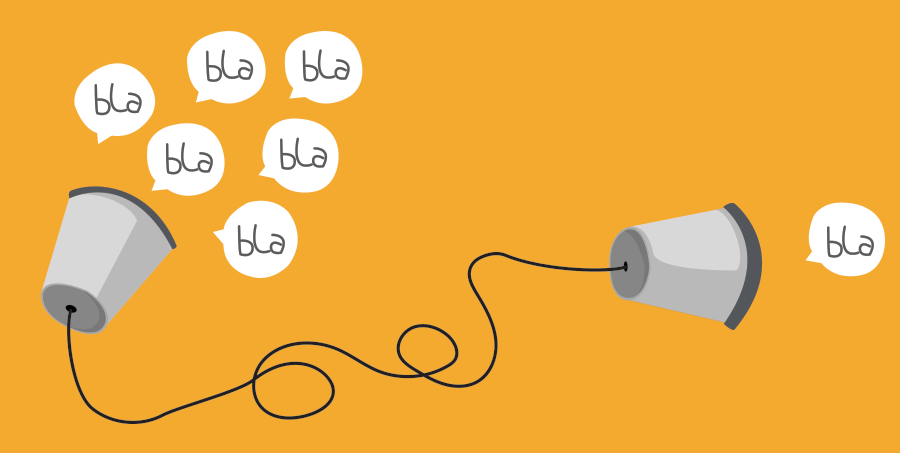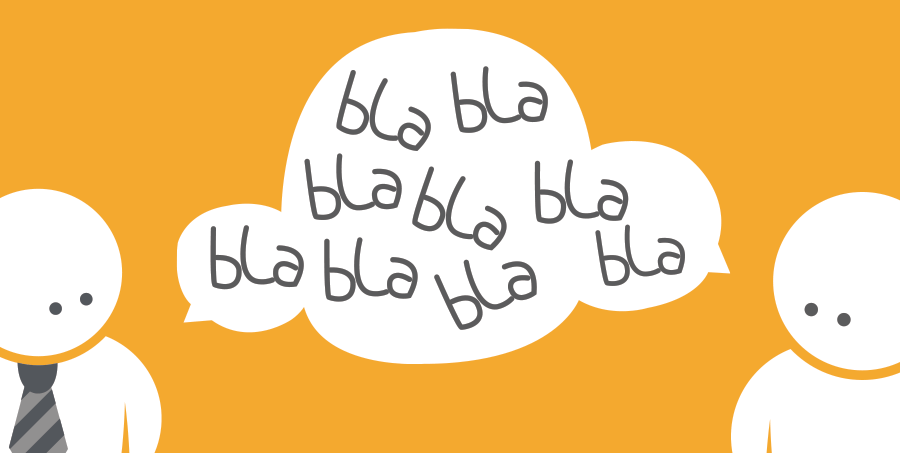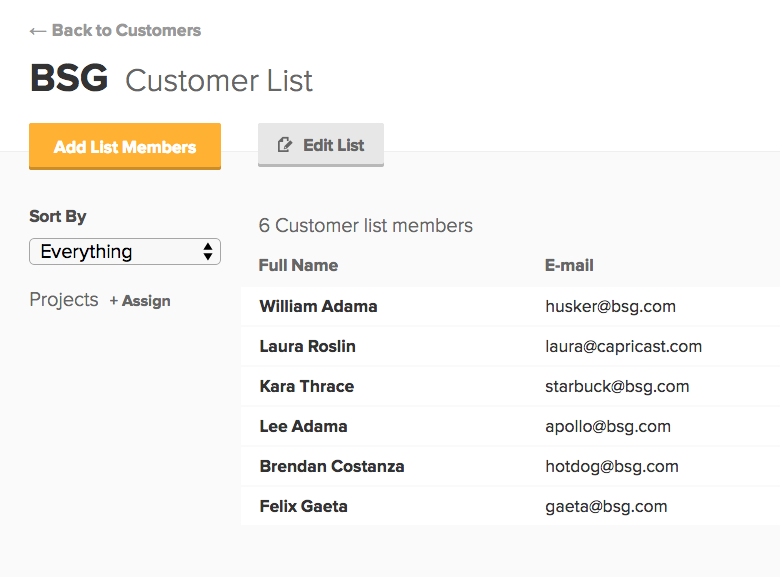Think of a designer. You might work with a designer, or you might have seen one in passing with that unmistakable designer affinity for apple products and snark. You might even be one yourself! Now picture this designer working. You're probably imagining this person heads down at an immaculate desk with a Moleskine in hand and earphones in their ears. She's blissfully pushing pixels around a screen until they're just right. Ah, DESIGN!
What this designer has done is isolated herself far away from her customers.
Design is a Conversation
In Let's Make Mistakes, Mike Monteiro talks about the hiring process for designers and doing designer tests. A common test is to give the designer a popular site or app and ask them to "redesign" it. In the podcast, Monteiro's rather succinct and appropriate response to this practice was 'You're not designing d*ck.'
Design is a process that involves learning about the business goals of the product, as well as the customer needs. Taking a quick pass at a visual update is not design and will not help anyone find out if a candidate will be a good designer.
Step Away From the Pixels

Design is hard, but talking to people is harder. A product designer needs to master both doing awesome work and presenting it awesomely. There's no such thing as a great designer that just pushes pixels around. If a designer can't sell her work, then she's not doing her job. In over 16 years of experience with design, we've figured out that designers can't work in silent isolation. A great designer asks questions, and doesn't treat feedback or a requirements document as a to-do list.
A Requirements Document Isn't a Product Recipe
' Which leads us back to the PRD, or product requirements document. It's a living document that evolves as you get feedback from customers. We're waging war against the traditional PRD. These documents can hold the team back and keep people from innovating. There are better ways to prevent feature creep, either by using a PRD or ditching it entirely. If you're a consultant or a project manager at an agency, you might think that PRD's are a good thing because they give you clarity. A PRD, however, will not get you to the right answer.
Everyone Should Present Their Work. Yes, Even Product Designers
We should clarify that when we use the word "customers," we're talking about both customers in the product sense and clients in the consulting sense. Clients are customers too, so whatever we say here about product design and customers applies in an agency environment and consulting relationships too. There's a gap between product designers and consultants. Product designers think they're above selling, which couldn't be further from the truth. Every time a product designer presents a new feature to their team, they're selling that work. Consultants on the other hand, don't traditionally think about problems to solve, and will immediately jump into their comfort zone. Designers need to get more comfortable with presenting &mdashl and talking with customers.
Sold. Talking to Customers is a Thing. Now What?
There are a few things you're going to need to do, starting with actually finding your customers. If you have an existing product then that's great! You already have a pool of customers you can tap into. If you're still building your first iteration and you don't have any customers yet, then you'll need to figure out where your customers hang out. Go to forums, visit link sites they might frequent, tweet out with appropriate hashtags. You'll basically want to do the opposite of being "stealth."
Brace Yourselves. Feedback is Coming

Don't just hop on customer calls unprepared. A customer call is a great opportunity for show-and-tell, so flex your presentation muscles and get dialin'. In fact, it's mandatory that you hop on a call or walk into a room with something. Like, are you working on an awesome new feature? Are you updating your visual styles? Bring that with you! Most of all, consider the type of feedback that would be most valuable to you, then go present the work that will get you that feedback.
As we're working on the new Notable release, we're also constantly getting on calls with existing customers to show our progress and get feedback. This feedback has been incredibly valuable to us and not just on the product-and-features front. On one of the calls, we presented our new marketing site to a customer. We got validation on a lot of the decisions we'd made in our design, but we also got some feedback that we wouldn't have noticed on our own. For instance, we're combining all the apps into a single platform with the next push, and we hadn't made that quite clear in our marketing site redesign. This was easy for the customer to pick up on, because they're looking at the site with fresh eyes, but our own team never really saw the issue until it was highlighted in that particular section of the site.
Forget Shipping. Talk to Customers Early and Often

Shipping is great. As far as a customer is concerned, if you don't ship your product doesn't exist. Now that we got that out of the way, you need to also talk to your customers early and often. Don't wait until your product is "complete." Let's face it ' designers are perfectionists, and we'll polish and polish until the cows come home. That's awesome, but not helpful if you're to have an effective design feedback loop.
Talk With Your Customers, Not at Them

We used the word presentation to describe what you'll do on a customer call. This might be a bit misleading. Why? Because you should not be doing all the talking on these calls. Sure, you have a message you want to get to your customer, to get them excited about an upcoming release or a feature update, but this is really all about the customer and their feedback. That's what will help you improve your product.
It's Just a Customer Development Thing
Talking to your customers is not as daunting as you might think, as long as you have a plan! It's almost like a formula ' do work, present, get feedback, filter and organize, do more work, etc. There is a missing piece, however. What happened to that customer? It's a little cheesy, but one of the most fulfilling parts of building a product is growing it along with your customers.
As your customer base starts to grow, it will be more challenging to keep track of everyone you talk with. This is why keeping your customers in a solid CRM is absolutely necessary. The problem with a conventional CRM is that designers don't like to use tools like CRMs. You might as well ask your designers to use spreadsheets.
We've been trying to figure out how to work better with our customers, which is why we're building Customer Lists as a primary feature of our upcoming Notable release, which you can see a sneak preview below.

These are easily accessible customer lists that you can assign to projects. Designers will then have very little barriers to sharing content with customers. This isn't a replacement for a traditional CRM, of course. We use Zoho CRM here ' it's super helpful for keeping track of customers. For designers, however, we needed a simpler way to share design work with those customers. You create a customer list in the same way you would in any CRM: simply type out names and address or upload a CSV, and Notable will do the rest.

For example, you can create a customer list named "Mobile Users." You can then assign this list to a project for a new feature you're building. The next time your designer builds a prototype, they can quickly share that prototype out with the Mobile Users list. We're being a little sneaky here, eliminating the usual scheduling or access privilege excuses.

But in the end, it'll help designers reach out to more customers so they can get feedback and have more meaningful conversations, where they're taking with each other to make a better product.
